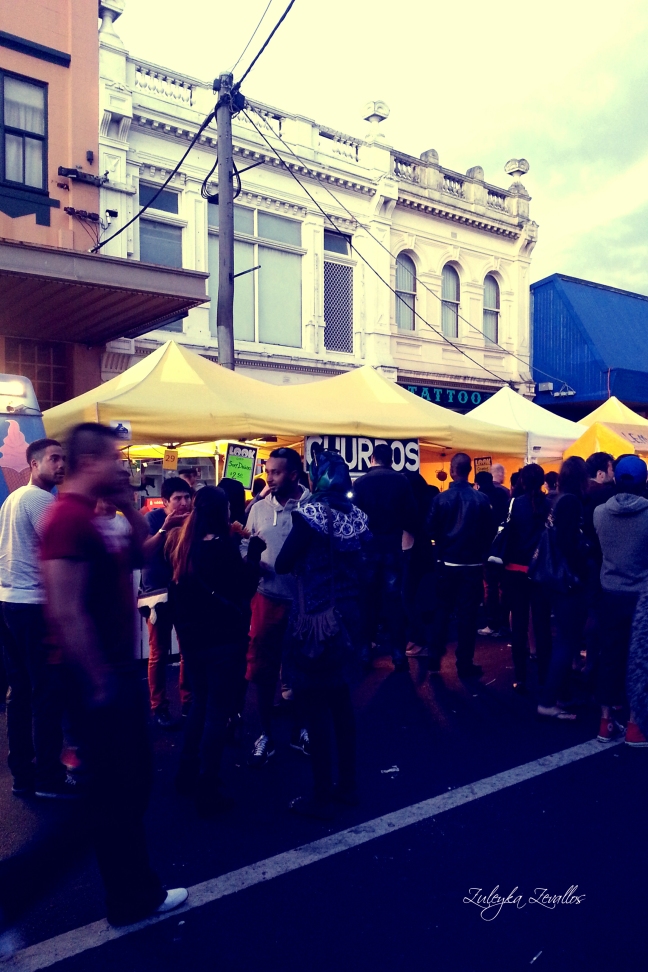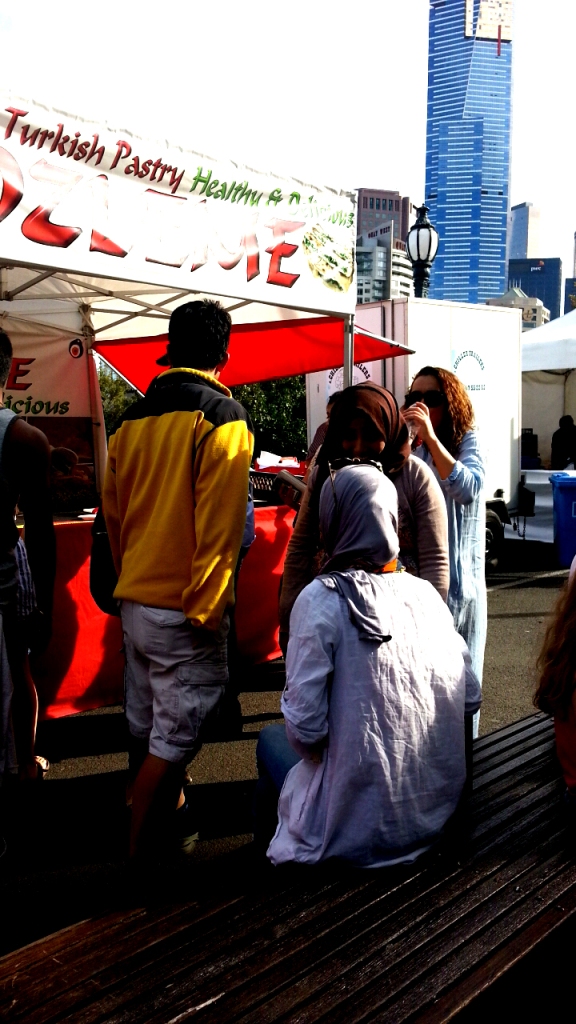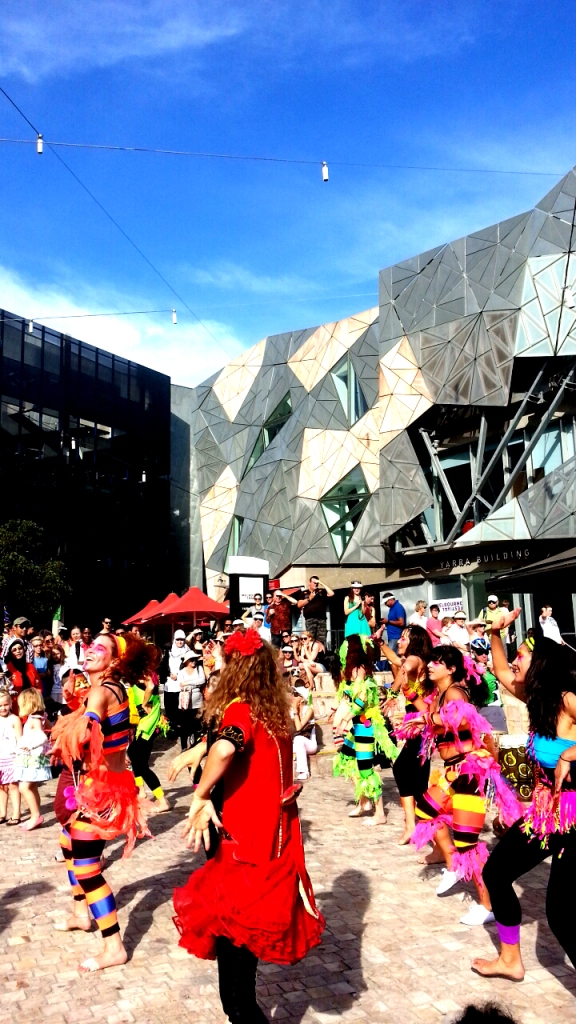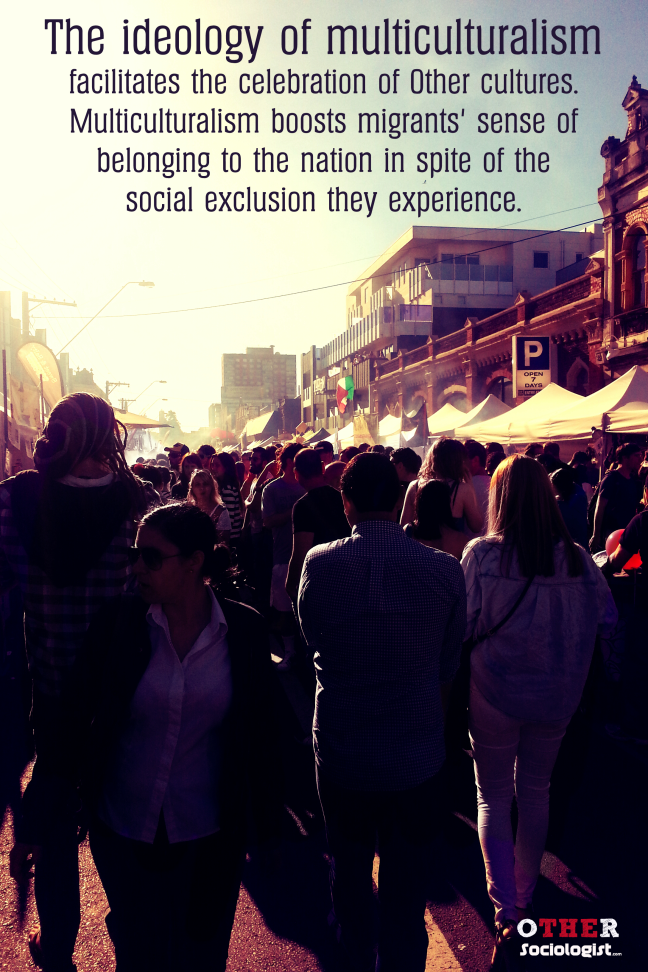This article was first published in 2005 by People and Place.
Abstract
Young women of Latin and Turkish origin living in Melbourne find it hard to see any Australian culture. Some see a vacuum; others see a bland milieu populated with ‘average-looking’ people. In contrast, they feel that their own migrant cultures are strong. They ‘get through more’. If there is any Australian culture it is, in their opinion, losing ground to migrant cultures.
Introduction
Academic and public debates about Australian culture are often centred on the tensions between ‘traditional Australian’[1] and multicultural ideas about national identity. This paper considers Australian culture as described by 50 second-generation migrant-Australian women aged 17 to 28 years.
A second-generation migrant is defined in Australian Census statistics as a person with at least one parent who was born overseas.[2-3] My sample includes both types of second-generation migrants. All 50 women were Australian citizens. Thirty women were Australian-born and the 20 women who were born overseas arrived between the ages of six months and 10 years (average age of arrival was six and all women had spent at least half of their lives living in Australia).
I gathered my sample through the snowball method, starting from student social clubs in Melbourne universities which catered to Turkish and Latin students.[5] I conducted in-depth, semi-structured interviews with the women during the period September 2001 to April 2003. The interviews were tape-recorded and transcribed verbatim, and the participants were given pseudonyms. The overall sample of 50 participants consisted of heterosexual women who were mostly single, living in their parental home and studying in higher education on a full-time basis. Many of them lived in the less affluent Western suburbs of Melbourne, their parents worked mostly in working-class occupations, and they generally identified themselves as ‘religious’ (most of the Latin women identifying as Catholic, and all of the Turkish women identifying as Muslim).
The sample size and the purposeful and snowballing recruiting methods mean that this study is not representative of the groups interviewed. It is likely that a sample of first-generation migrants of an older cohort who are less educated, or a wider sample of second-generation migrants which included both men and women, might offer different insights about the issues explored in this paper. Despite its limitations, this paper’s focus on this sample of second-generation migrants provides an opportunity to understand how ideas of multiculturalism shape second-generation migrants’ experience of mainstream Australian culture and Australian identity.The category of ‘Anglo-Australian’ (which the women also referred to as ‘Australian’, ‘Anglo’, ‘Anglo-Saxon’ and ‘white Australian’), was pivotal to their understandings of their own identities. These women’s understandings of Anglo Australians as a cultural group were also important in their discussions of multiculturalism. This was because the participants believed that Australia did not have a distinguishable culture of its own outside of its multiculturalism and that Anglo-Australian cultural traditions did not amount to a distinctive culture.
Narratives of Australian Culture
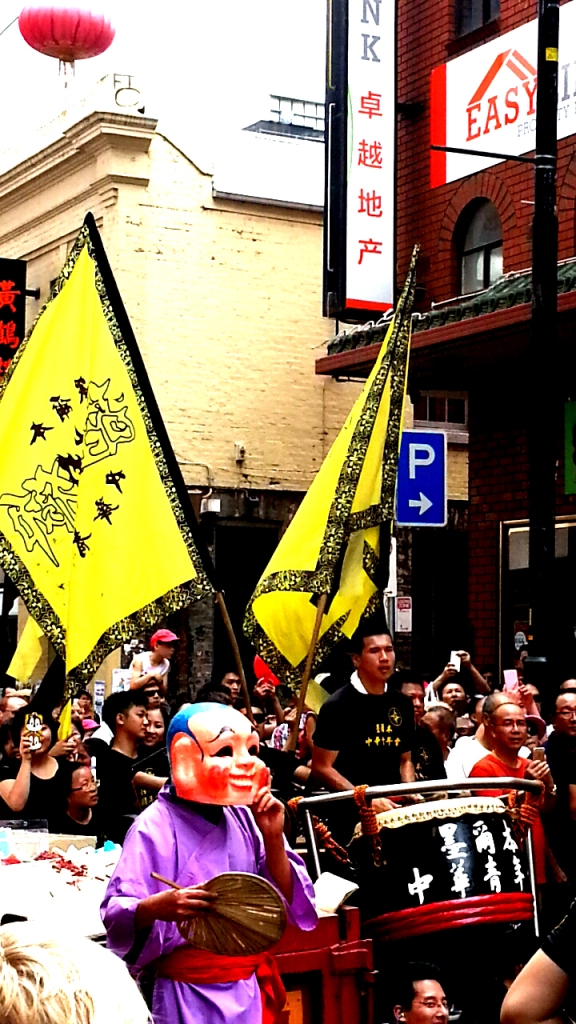
National culture is founded upon a collectively imagined[6] process that includes interpretations of national traditions, a sense of shared history, social norms about ‘our way of life’, and political beliefs about national belonging.[7] There are two main narratives academics draw on when discussing Australian national culture: first, Australian culture can be defined through a traditional Australian identity; second, Australian culture can be defined through its multiculturalism. Since the advent of multiculturalism, questions about how best to describe our national identity have intensified, and, more specifically, ideas about what exactly makes up ‘traditional’ Australian culture are hotly debated.[8] For example, Bob Birrell outlines how revisionist views of Australian federation are connected to claims that Australian society has never had a cohesive cultural identity due to its colonial history.[9] Birrell argues against this and, along with other authors, argues that Australian culture is broadly located in its egalitarian and democratic values, which emphasise common civic ideals, a reaction against the hierarchical British class system, and valuing ideals of mateship and ‘a fair go’.[10]
Miriam Dixson described traditional Australian identity as an ‘imagined’ ideal type, but she also described it as a very real ‘complex form of ethnicity’.[11] According to Dixson, it is Anglo-Celtic ethnicity, and not the ideology of multiculturalism, that forms the basis of the national ‘core culture’.[12] In the mid 1990s, John Hirst argued along similar lines, although he was uneasy with references to an Anglo-Celtic ethnicity.[13] Hirst argued that traditional Australian values were essential to the success and acceptance of multiculturalism, and that Australian ‘society’s instincts are inclusive’:
[Australian society] is uneasy with sustained and systematic exclusion. Migrants, too, were to have a ‘fair go’. When we take pride in multicultural Australia, we are celebrating the virtues of old Australia.[14]
The second way of thinking about Australian national culture is through a narrative of multiculturalism. A number of Australian scholars advance a version of ‘multicultural citizenship’ which argues for a different national identity that, in their view, is more receptive to Australia’s multi ethnic population.[15] Advocates of a national culture based on multiculturalism believe that blending multicultural ideals of nationhood with a version of citizenship founded on civic values (rather than the close emotional bonds of a shared sense of peoplehood) will show a true acceptance of Australia’s ethnic diversity. Consequently, an Australian narrative of a multicultural national identity is built upon not just a celebration of cultural diversity, but is also a critique of the traditional Australian narrative of the nation (especially in its connection to an Anglo-Celtic identity).[16]
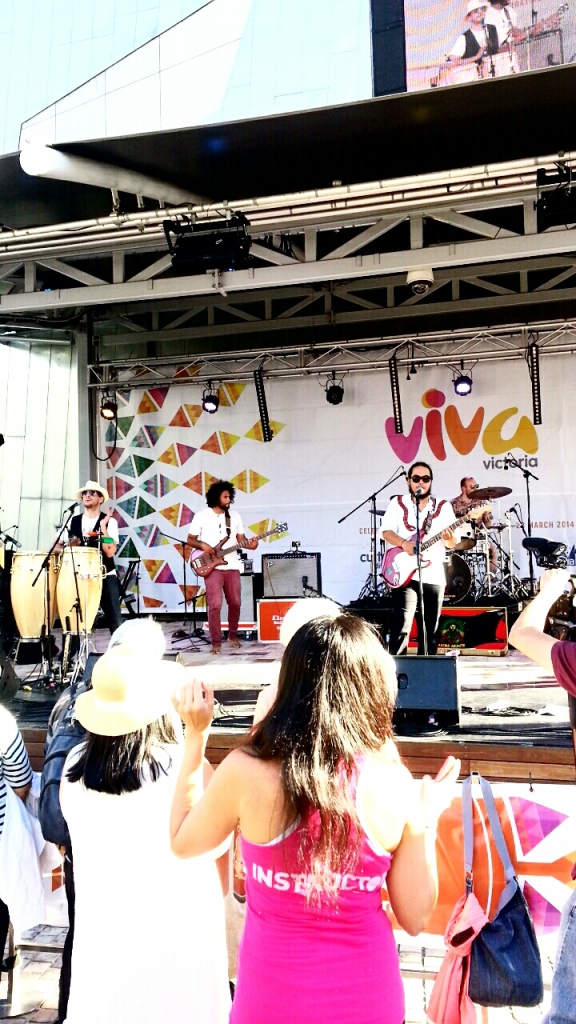
The ideals of traditional Australian culture are seen by many multicultural advocates as both gendered and racially exclusive. Moreover, these advocates believe this view of national culture to be dying out. Empirical evidence, however, suggests that ‘The “old Australia” lives on quite strongly in popular culture’.[17] Rothwell writes that ‘many Australians’:
love their solid country, and its values, even if they might have trouble saying precisely what those values are. They want to keep them…. They know that they and their world are not racist: indeed, almost everyone has direct experience of the bonding effects of immigration, and is prepared to give any incomer a hand and a fair start. Let these new arrivals, though, join the team. This is a widely-based, pan-Australian attitude, deeply held.[18]
Thus there are tensions between the traditional Australian model of national culture and the multicultural model of national culture. My research found that these tensions influenced the participants’ view of Australian national identity.
Beliefs About Australian Culture
Some Australian academics argue that migrant communities in Australia are seen by the Anglo-majority in terms of the cultural items that fit within the model of multiculturalism.[19] For example, established Australians see migrants in terms of folk dance or food.
Equally, some migrants (including my participants) also see themselves as being at least partly defined by specific cultural items and practices. Thus the multicultural framework means that, in order for migrant cultures to be recognised as legitimate and visible, they must be represented by tangible objects that can be experienced through sight, sound and touch. For example, in order to be ‘noticed’ and be seen as a legitimate migrant cultural community in Australia, migrants could dress up in their national costume, play traditional music and dance their folk dances, or present artworks that are ‘authentically’ indigenous to their country of origin.[20]
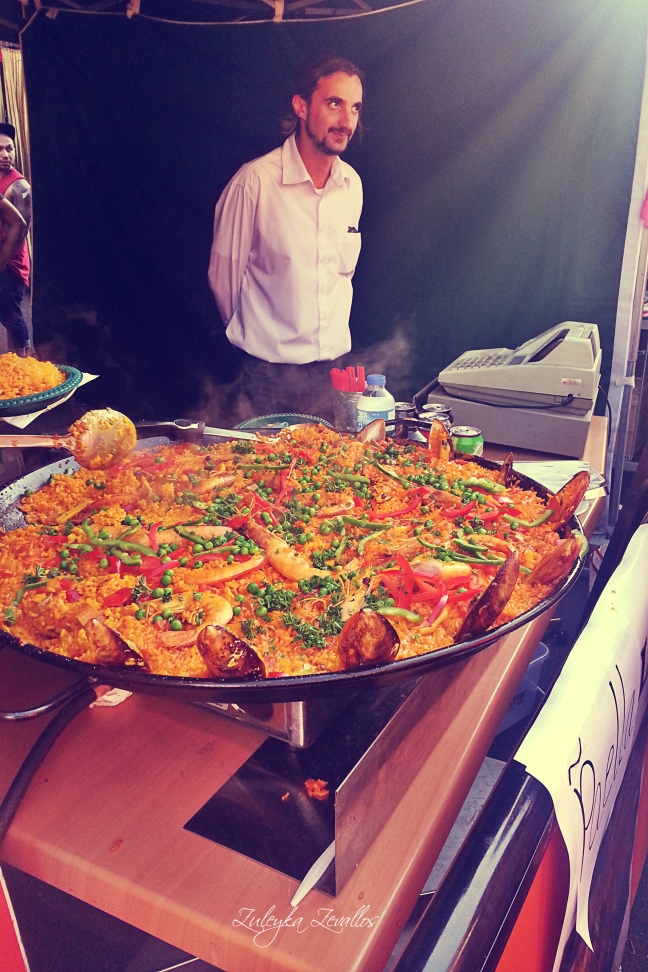
Within this multicultural framework,‘ethnic culture’ belongs to ‘the other’ because migrants and indigenous groups are continually representing culture in terms of authenticity and ‘tradition’. Hence, Australians (both Anglo and non-Anglo) learn to read culture as something that migrants must continually represent through specific symbols, but the same expression and understanding of culture is not applied to Anglo-Australians. In this context, the participants expressed two beliefs about Australian culture: first, Australia does not have a distinctive culture, and second, Anglo-Australian cultural traditions were dismissed as illegitimate.
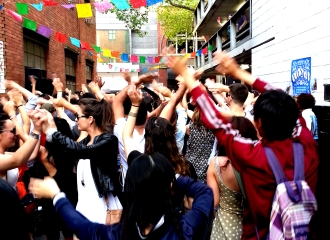
The majority of the participants typically said, ‘I don’t think Australia has a culture’, and they initially said that they could not describe Australian culture, even though they could describe their own cultures.[21] To the women, the idea of ‘culture’ represents a distinctive cultural heritage that reflects a set of traditions that are ‘old’ and unique. Even Xiomara [Latin], who held the most enthusiastic perceptions of Australian ethnicity, was unable to describe Australian culture. She said, ‘I really enjoy it’, but at the same time she said, ‘I can’t put a word to Australian culture’. Moira [Latin] said:
Australian culture? I don’t know if they have much of a culture! [Laughs] Oh Gosh. Their culture? Their culture’s basically — do what you want to do, be what you want to be. Yeah [laughs] I don’t know if I could really explain their culture.
Gracie [Latin]: I don’t think Australia has a culture.
Why would you say that?
Gracie: Because what do they have, really? They don’t make gnocchies on the 29th [an Argentinean ‘tradition’]. They don’t have nothing. What? They make a barbecue for the grand final? And that’s about all.
Do you think that’s a negative thing or is that a positive?
Gracie: Yeah, negative, definitely.
Why do you think it is that they don’t have those sorts of traditions?
Gracie: I reckon it’s because the Poms don’t really have any traditions. Coz they settled here, no one here has any either. Maybe if the Aborigines, if they were to have possession of their land, like they have more traditions and culture I think. But the Poms don’t, therefore we don’t.
This comment is noteworthy for two reasons. Firstly, Paul Sheehan once criticized the cultural ‘chauvinism’ some Chinese immigrants displayed towards Australian culture,[22] and so the women in my study might be seen to be culturally chauvinistic towards traditional Australian culture. At the same time, however, the second reason why this comment is noteworthy is due to the way that Gracie uses the pronoun ‘we’ when describing Australians’ lack of traditions. Most of the women I interviewed saw themselves as Australian, but their view of traditional Australian culture as ‘cultureless’ highlights their confusion as to what exactly constitutes the uniquely Australian aspects of this culture.
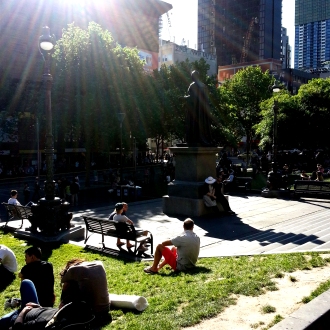
The second way in which the participants saw Australian culture was to dismiss the legitimacy of Australian cultural traditions. While they said that Australia had no distinctive culture, they did in fact list aspects of Australian culture, especially its lack of religiosity, its freedom, ideals of egalitarianism, sport, its convict history, meat pies, barbecues, the outback, the outdoors and the laid-back Australian persona. The women did not see the social practices that characterise the everyday life of Australian society as a distinctive culture because they could not see a link between such everyday practices and a unique cultural heritage that was clearly defined. For example, the women in both groups described ‘Australians’ as ‘laid-back’ people who let you ‘be yourself’. This was contrasted with the gossip in the women’s migrant communities, which was especially acute in the Turkish women’s case.
Güldeste [Turkish]: You kinda have to put on a mask when you’re in the Turkish culture, you do. Only with your closest friends you can be yourself. With the Australian culture I like how you can be yourself, wherever you are. You don’t get that in Turkish culture.
How might you describe Australian culture?
Akasma [Turkish]: Actually I don’t think Australians have much of a culture I guess. When you compare it to the Turkish culture, it’s like a big, big difference. They’ve [the Turks] got more things that they do, and Australians are more laid back. They do whatever they want and how they want. They don’t really follow a certain thing, that’s how I see it. A European or a Turkish [person], they follow more of a culture.
How would you describe Australian culture to someone who does not even know how to find Australia on a map?
Claudia[Latin]: Just Australian culture? Just the Aussie part of it? [Laughs] That’s funny! You know, every time someone says, ‘Australian culture’, I think of [laughing] beer, pies and the footy! That’s the first things I think of!
Dilruba [Turkish]: What is there seriously? [Laughs] What is there? There’s barbeques. The outback. I seriously don’t see what there is. It doesn’t have much of the history anyway, Australia, all together. When I look at my Turkish history, I think, ‘Oh my God, look where we were!’ You feel proud.
How would you describe Australian culture?
Wendy: [Laughs] Oh God! I don’t know whether I understand it terribly well. Confused, in a way. I think that the Australian culture is not very well defined. In a way I guess that bland comes to mind [laughs]. There isn’t a lot there. I think that the richness we have in Melbourne comes from the fact that there are a lot of different cultures to enrich the whole thing and people find it all very fascinating and gorgeous. It’s not a lot to do with Australian culture per se. I don’t think that it has a lot of substance to it [small giggle] that doesn’t sound very good. It’s probably because I don’t understand it well enough.
…I really don’t think that you could get a society that is more equal than the Australians… Looking from the outside in, I don’t think there is [gender inequality]. If they were to live in our culture I think they would suffocate! [Laughs].
Multiculturalism as Culture
Kumru [Turkish]: I think to me there isn’t a pure Australian. I think Australia is so unique because everyone has brought their own thing to Australia. We’ve made Australia such a great country because of all our little knick-knacks that we’ve brought and our ideas, our little cultural festive celebrations.
Claudia [Latin]: It’s like we’re their culture.
Solmaz [Turkish]: I think we’ve done more for this country than they [‘Anglos’] have in that sense.
The second way the participants saw Australian national culture was by emphasising Australia’s multiculturalism. Multiculturalism featured heavily in the participants’ discussion of Australian ethnicity. The word ‘multiculturalism’ was described along similar lines by the participants in both groups: first it was a term describing the diverse make up of Australian society, and second, it was an ideology of tolerance for this diversity.[23] The women described multiculturalism as, ‘Just a different variety of cultures’ [Ursula, Latin], and ‘people from different ethnic backgrounds and cultures and religious backgrounds living in a society and a geographical location in harmony’ [Amatullah, Turkish].
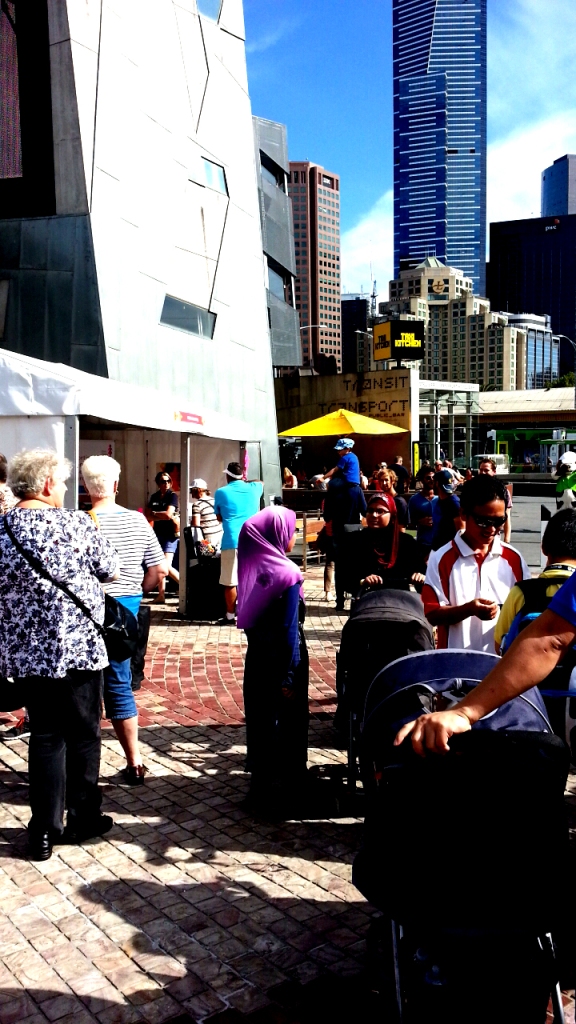
The participants valued their Australian citizenship highly and felt positive about their lives in Australia. At the same time, 49 of the 50 women reported feeling a sense of social exclusion from being ‘Australian’. This is because they felt that, to be accepted as an Australian, they had to fit the ‘stereotype’: that is, being ‘blonde, blue-eyed, pale skin’ and ‘average-looking’.[24] When Esmeray [Turkish] said, ‘I don’t fit the criteria by the way I look’, she spoke for most of them. Despite this feeling, and despite their use of the term ‘Australian’ as synonymous with Anglo-Australian, all 50 participants paradoxically described the Australian identity as ‘multicultural’. And this second image of Australianness was seen as positive.
Solmaz [Turkish]: To be Australian I think it means to be multicultural in every sense… You’ve got every look. You’ve got the grungies, you’ve got the hippies, the punks, the Buddhist people with the baldie head, the long dresses, the bearded men. You’ve got everything here and I think we’re advantaged to be like this.
Claudia [Latin]: In a way it’s sad because Australia, it needs to really maintain its culture and I don’t think it is much… There’s too many cultures and you just don’t know what it is anymore. Like: is Australia even there? So I think it’s losing their traditions because of other cultures.
Dilruba [Turkish]: You don’t see much of the Australian values anyway. It’s like they don’t have a strong cultural identity anyway. You don’t see it, even if there is. I don’t know, the Turkish culture just gets through more.
Discussion
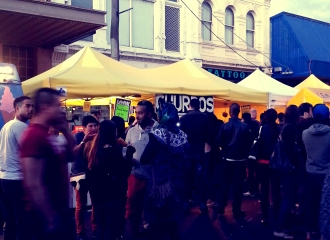
Even though they could list elements of the host culture, the participants arrived at the conclusion that Anglo-Australians must not have a distinctive culture because Australian culture was beyond description. It was opaque and impenetrable to them: they could not see it, so was it ‘even there?’ they asked rhetorically. Why would the women insist that Australian culture was defined through its lack of culture? Rejecting the contribution of Anglo-Australians to Australian national culture could be seen as a reaction against the pressure to conform to the blond, blue-eyed stereotype, but it was also partly based upon ethnocentric notions of ‘culture’. Furthermore, the women seemed not to understand Australian culture because they were unfamiliar with its history. Given that these women had all spent their formative years in Australia, this unfamiliarity with Australian culture and history could be a product of our educational system.
The women described their migrant cultures as ‘old’ and ‘vast’ and, in comparison, they saw Australia’s culture as fairly new when defined though Anglo-Australian institutions. The cultural symbols of traditional Australia, such as the bush, and the more contemporary symbols of Australian culture, such as pies and the footy, did not conform to their expectations of what a culture should be. To them, Anglo-Australian culture was less centred on traditional costumes or specific cuisine, and was more characterised by an informal or ‘laid back’ attitude towards traditions.
The cultural contributions of Anglo-Australians to the world of art and literature and in other so-called ‘high art’ arenas throughout the past 217 years did not feature in the women’s notion of Australian culture. In addition, Anglo-Australian’s ties to the much older cultural traditions of their British and Irish ancestors did not feature in the women’s understanding of Anglo-Australian culture. Culture was something that was enduring and something that stretched back through the ages. Two centuries of Anglo-Australian cultural endeavours were not enough to constitute a culture. This was especially so since the women believed that, whatever Australian culture might be, it was being changed and ‘taken over’ by migrant cultures.
The narrative of multiculturalism is pivotal to the women’s understanding of Australian culture and of their own positioning within such an Australian culture. Their understanding of culture as an ancient and tangible ‘thing’ (made up of artefacts or practices), and their belief that culture was something that people either have or do not have, stopped them from really seeing Anglo-Australian culture as culture. But in one sense they did feel that it was all around them (it was described as ‘bland’ and Anglo-Australians were described as ‘average-looking’).
In another sense it enveloped them to the point where they could not see it (‘is Australia even there?’), and its imagined absence threw the uniqueness of their migrant cultures into clear relief. Though it was bland or invisible, they did know that something was there, but that something was strange and alien to them. Whatever it was, it had been weakened in the face of multiculturalism and this gave strong legitimacy to the women’s own migrant cultures. This process ensured that their migrant ethnicities were strengthened to the point where they ‘get through more’ than Australian cultural influences. As the women saw it, multiculturalism facilitated the celebration of their migrant cultures and elevated the contribution of these cultures to the nation. This made them confident about their sense of belonging to the nation in spite feeling as if they ‘don’t fit the criteria’ of being Australian. They could feel that they were contributing to something more authentic, that is, Australia defined as multicultural.
Acknowledgements
References
- There are difficulties in naming the Australian host culture in relation to migrants. In the past, the host culture has been termed ‘traditional Australian’ or ‘old Australian’. More recently, advocates of multiculturalism contrast multicultural visions of Australia with an ‘Anglo-Celtic’ culture or ethnicity. In the context of this paper, I use the term ‘traditional Australian’ to refer to the majority culture in Australia; but I note that my participants refer to this group as ‘Anglos’ or ‘Anglo-Australians’.
- See S-E. Khoo, P. McDonald, D. Giorgas, and B. Birrell, Second Generation Australians: Report for the Department of Immigration and Multicultural and Indigenous Affairs,Department of Immigration and Multicultural and Indigenous Affairs (DIMIA), Canberra, 2002, p. iv.
- M. Butcher and M. Thomas, Generate: Youth Culture and Migration Heritage in Western Sydney, Institute For Cultural Research and The Migration Heritage Centre, Penrith South DC, 2001, pp. 6-7; A. Seitz and C. Kilmartin, Don’t Assume the Stereotype: A Pilot Study of Women of Non-English Speaking Background in Melbourne, Department of Immigration and Ethnic Affairs, Melbourne, 1987, p. 14; E. Vasta, ‘The Second Generation’, in S. Castles, C. Allorse, G. Rando and E. Vasta (Eds) Australia’s Italians: Culture and Communities In a Changing Society, Allen and Unwin, Sydney, 1992, p. 155; E. Vasta, ‘Youth and Ethnicity: The Second Generation’, Family Matters, vol. 38, 1994, pp. 21-22.
- Butcher and Thomas, op. cit., p. 28.
- Alternative attempts to recruit young second-generation women through other means failed. For example, I advertised for participants by putting up posters in suburbs with substantial Turkish and Latin populations and I contacted Turkish and Latin community advocacy and welfare groups around Melbourne.
- B. Anderson, Imagined Communities: Reflections on the Origin and Spread of Nationalism, (Revised edition), Verso, London, 1991.
- R. Jenkins, Rethinking Ethnicity: Arguments and Explorations, Sage, London, 1997, pp. 142-147, 159-163.
- K. Inglis, ‘Multiculturalism and National identity’, in Observing Australia: 1959 to 1999, Melbourne University Press, Melbourne; see also J. Docker, ‘Post-nationalism’, Arena Magazine, February-March, 1994, pp. 40-41.
- B. Birrell, Federation: The Secret Story, Duffy and Snellgrove, Sydney; for an alternative view, see A. Jamrozik, The Chains Of Colonial Inheritance, University of New South Wales Press, Sydney.
- ibid. See also E. Thompson, Fair Enough: Egalitarianism in Australia, University of New South Wales Press, Sydney, 1994, pp. 49-91; K. Betts, ‘Democracy and dual citizenship’, People and Place, vol 10, no.1, 2002, pp. 57-62.
- M. Dixson, The Imaginary Australian: Anglo-Celts and Identity 1788 to the Present, University of New South Wales (UNSW) Press, Sydney, 1999, p. 7.
- ibid., p. 8
- J. Hirst, ‘National pride and multiculturalism’, People and Place, vol. 3, no. 3, 1994, p. 2
- ibid., p. 6
- A. Davidson, From Subject to Citizen: Australian Citizenship in the Twentieth Century, Cambridge University Press, Cambridge, 1997; S. Castles, ‘Multicultural citizenship: a response to the dilemma of globalisation and national identity?’ Journal of Intercultural Studies, vol. 18, no. 1, 1997, pp. 5-22; M. Kalantzis, ‘Multicultural Citizenship’, in W. Hudson, and J. Kane (Eds), Rethinking Australian Citizenship, Cambridge University Press, Cambridge, 2000, pp. 99-110; C. Kukathas, ‘Multiculturalism and the idea of an Australian identity’, in C. Kukathas (Ed.) Multicultural Citizens: The Philosophy of Politics of Identity, The Centre for Independent Studies, St Leonards, 1993, pp. 144-57.
- For example, see S. Castles and E. Vasta ‘Introduction: Multicultural or Multi-racist Australia?’, in E. Vasta and S. Castles (Eds), The Teeth Are Smiling: The Persistence of Racism in Multicultural Australia, Allen and Unwin, St Leonards, 1996, pp. 1-16; J. Stratton and I. Ang, ‘Multicultural Imagined Communities: Cultural Difference and National Identity in the USA and Australia’, in D. Bennett (Ed.), Multicultural States: Rethinking Difference and Identity, Routledge, London, 1998, pp. 135-162; E. Vasta, ‘Multiculturalism and Ethnic identity: the Relationship Between Racism and Resistance’, Australian and New Zealand Journal of Sociology, vol. 29, no. 2, 1993, pp. 209-25.
- T. Phillips and P. Smith, ‘What is “Australian”? Knowledge and Attitudes Among a Gallery of Contemporary Australians’,Australian Journal of Political Science, vol. 35, no. 2, 2000, p. 221.
- N. Rothwell, ‘Adrift in a Tribal Tide: Inside the Psyche of the Nation’, in M. Waldren (Ed.), Future Tense: Australia Beyond Election 1998, Allen and Unwin, St Leonards, 1999, p. 43.
- ibid.; M. Morrisey, ‘The Use of Culture’, Journal of Intercultural Studies, vol. 18, no. 2, 1997, pp. 93-108; B. Langer, ‘Globalisation and the myth of ethnic community: Salvadoran Refugees in Multicultural States’, in D. Bennett (Ed.), Multicultural States: Rethinking Difference and Identity, Routledge, London, 1998, pp. 136-177.
- E. Cohen, ‘Multiculturalism, Latin Americans and “indigeneity” in Australia’, The Australian Journal of Anthropology, vol. 14, no. 1, 2001, pp. 39-52.
- The Latin women discussed their families’ country-of-origin cultures as important to them and the Turkish women discussed Turkish-Muslim culture as important to them. The two groups described culture in different ways, but generally, they discussed ‘culture’ in reference to ‘traditions’ such as food, language, music, marriage rituals, and religious festivals, and ‘values’ such familism and sexual morality.
- P. Sheenan, Among the Barbarians: The Dividing of Australia, Randown House, Milsons Point, pp. 72-73
- See also M. Lopez, The Origins of Multiculturalism in Australian Politics, Melbourne University Press, Melbourne, 2000, p. 3; E. Vasta, 1993, op. cit., pp. 212-213.
- I found a similar sense of social exclusion in relation to Australian identity in a previous study. See Z. Zevallos, ‘That’s my Australian side: The Ethnicity, Gender and Sexuality of Young Women of South and Central American Origin’, Journal of Sociology, vol. 39, no. 1, 2003, pp. 81-98.
CREDITS
Zevallos, Z. (2005) ‘“It’s Like We’re Their Culture”: Second-Generation Migrant Women Discuss Australian Culture’, People And Place 13(2): 41-49.

